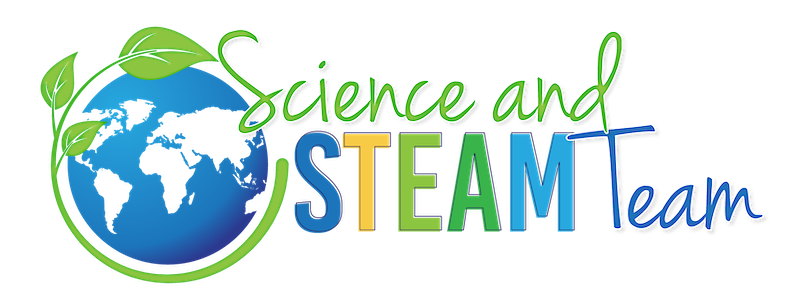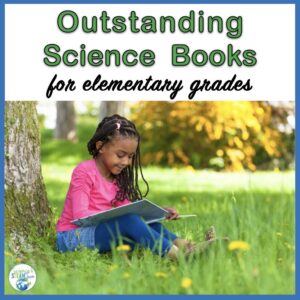New Picture Books for Science
Each year, I enjoyed adding some new picture books for science to my classroom library! I had a huge collection that was always popular with the kids! I still love to check out the list of “outstanding science trade books for students” that is published on the National Science Teaching Associations website each year. This list is published in January. The books on the list are all books that were published the year before. I find that they are perfect for the science library, lend themselves to many STEM challenges and other projects, are diverse in content and style, and are popular for years to come. I found this year’s list particularly good. Here are the new science picture books for elementary grades.
The Beak Book
Author and Illustrator: Robin Page
- for ages 3 – 8
- Birds’ beaks come in all shapes and sizes. This beautifully illustrated book is perfect for teaching about adaptations. Students will learn why different birds have different types of beaks. The author also uses interesting verbs when describing how birds use their beaks—perfect integration into ELA.
- STEM Concepts: Structure and function, birds, adaptations
The Body Book
Author: Nosy Crow, Illustrator: Hannah Alice
- for ages 7 – 10
- When I read that this was a board book, I was skeptical. However, it is made this way so that readers can see the layers of the human body. Children will learn about the structure and function of seven body systems.
- STEM Concepts: structure and function, the human body
Curious About Fish
Author: Cathryn Sill, Illustrator: John Sill
- for ages 2 – 6
- This is a basic book about fish for young readers. It has realistic illustrations.
- STEM Concepts: fish, structure and function
The Dirt Book: Poems About Animals That Live Beneath Our Feet
Author: David L. Harrison, Illustrator: Kate Cosgrove
- for ages 5 – 9
- This book is full of poems about organisms and dirt under our toes. It is told from the perspective of insects and other living and non-living things. The poems and vertical illustrations are fun!
- STEM Concepts: soil, ecosystems
Disasters By The Numbers: A Book of Infographics
Author: Steve Jenkins
- for ages 6 – 9
- This book is just what it sounds like. Learn about Natural Disasters through numbers, facts, and infographics.
- STEM Concepts: natural disasters, data
Dr. Fauci: How a Boy from Brooklyn Became America’s Doctor
Author: Kate Messner, Illustrator: Alexandra Bye
- for ages 4 – 8
- This is a very timely book. It talks about how hard work and determination can help people reach their goals. There is a timeline of Fauci’s life from childhood to the current day. His father and grandfather taught Anthony to ask questions, consider all the data, and never give up. The author also explains how vaccines work.
- STEM Concepts: problem-solving, engineering and design
Fearless World Traveler: Adventures of Marianne North, Botanical Artist
Author: Laurie Lawlor, Illustrator: Becca Stadtlander
- for ages 6 – 9
- As an artist-science teacher, I took an interest in this book. Marianne North was born in 1882, a time when women weren’t accepted by many in the field of science. She broke the rules to do what she was passionate about. She traveled the world, illustrating many species of plants.
- STEM Concepts: plants, botany
Hello, Earth!: Poems to Our Planet
Author: Joyce Sidman, Illustrator: Miren Asiain Lora
- for ages 5 – 9
- This would make a great read-aloud. Students will learn how amazing the Earth is, how it has everything we need and how we need to take care of it.
- STEM Concepts: plants, ecosystems, water cycle, Earth’s systems, conservation
This is a great video of the author explaining how she wrote the poems for the book and what influenced her. It would be the perfect video to show your students if you have them write poems.
If Bees Disappeared
Author and Illustrator: Lily Williams
- for ages 4 – 8
- The author writes about different types of bees and how crucial they are to our ecosystems; including our food supply. Lily offers ideas about how we can help to save these important insects.
- STEM Concepts: life cycles, bees, pollination, ecosystems
Scientists: Inspiring Tales of the World’s Brightest Scientific Minds
Author: Isabel Thomas, Illustrator: Jessamy Hawke
- for ages 7 – 9
- This book is filled with facts about 66 scientists. It is broken down into four categories (biology, chemistry, physics, earth and space). Within each category, scientists are introduced in chronological order. Each scientist has a single or double-page entry filled with facts and pictures. Perfect for introducing individual scientists, doing research, and more.
- STEM Concepts: problem-solving, experiments
The Secret Life of the Sloth
Author: Laurence Pringle, Illustrator: Kate Garchinsky
- for ages 6 – 9
- Readers will follow a female sloth through the first year of her life.
- STEM Concepts: rainforest ecosystem, sloths
She Persisted: Virginia Apgar
Authors: Sayantani Dasgupta and Chelsea Clinton, Illustrators: Alexandra Boiger and Gillian Flint
- for ages 6 – 9
- Not many women went to medical school back when Virginia Apgar did. She developed the Apgar test, which is still used today to check out the health of newborn babies. This book is one in the series of “she persisted” books.
- STEM Concepts: medical science, perseverance
Summertime Sleepers: Animals That Estivate
Author: Melissa Stewart, Illustrator: Sarah Brannen
- for ages 6 – 9
- Who knew that there are animals that do the opposite of hibernate (sleep all winter)? They estivate (sleep all summer)! Animals that sleep in the summer do it to avoid the heat. The author spotlights 12 animals that estivate.
- STEM Concepts: animal behavior
Tracking Tortoises: The Mission to Save a Galápagos Giant
Author: Kate Messner, Photographer: Jake Messner
- for ages 4 – 8
- Galápagos giant tortoises are endangered. The author and photographer traveled to the Galápagos Islands to study these tortoises. Learn about how the islands came to be, about these reptiles, and how people are trying to help them. This book would be suitable for middle schoolers too.
- STEM Concepts: ecosystems, Galápagos giant tortoises, human impact, climate change, geology
Why Not Get Some Picture Books for Science?
With a list like this, why not get some picture books for science? If your budget is limited, like mine was, talk to your librarian. I know mine was always more than happy to get nonfiction suggestions. All of the books on this list make great read alouds and will stimulate class discussions. There’s no better way for you to encourage a sense of wonder!
If you are interested in more picture books for science, check out our materials list for your grade level.
FYI, as an Amazon Associate, I earn a small commission on books I sell from my site. The price you pay is not affected.
And remember, it’s all science!


















One Comment